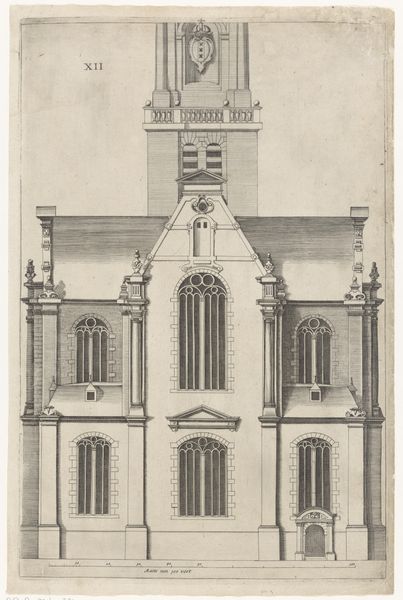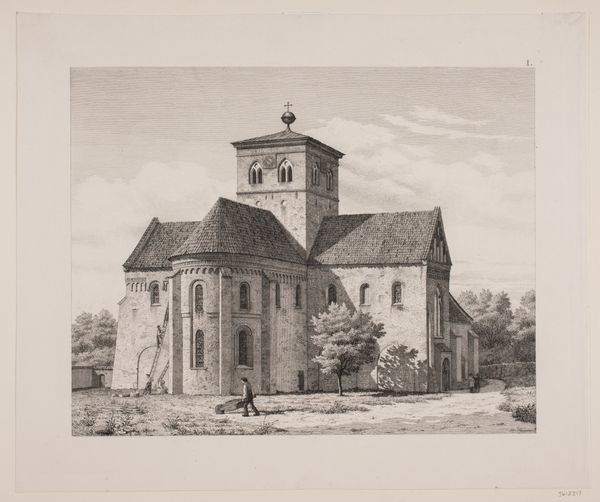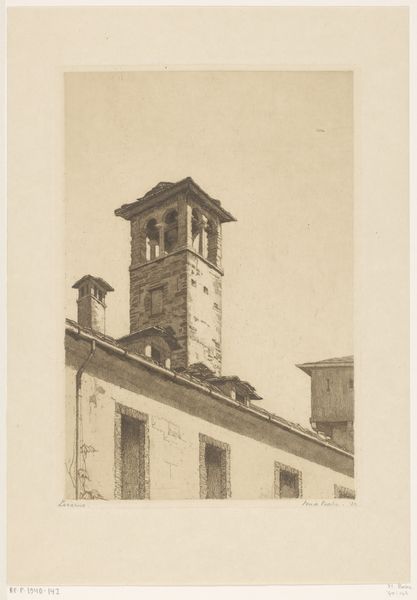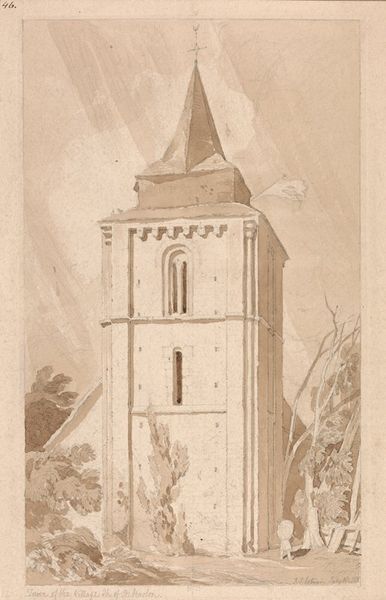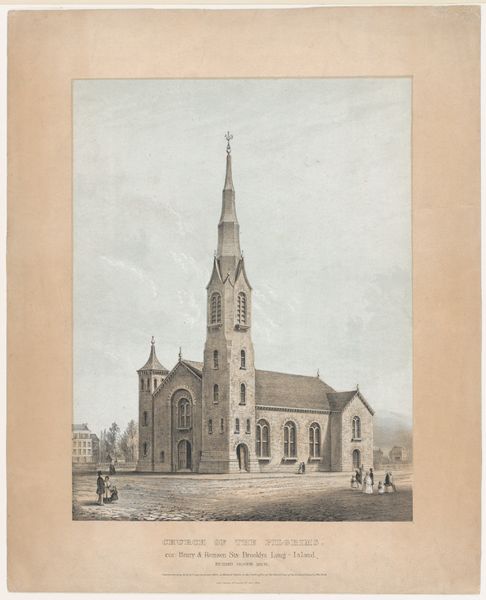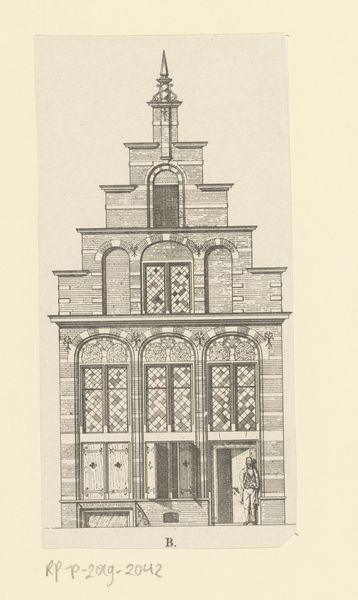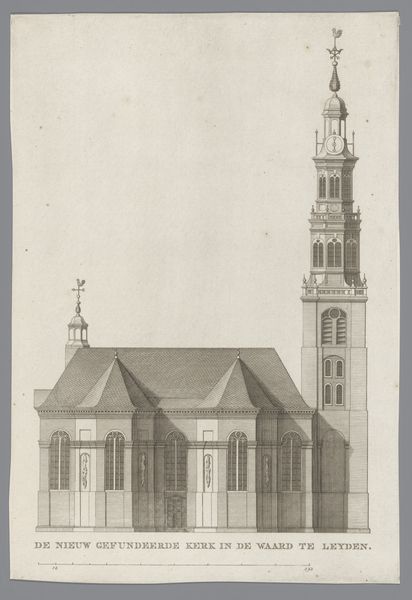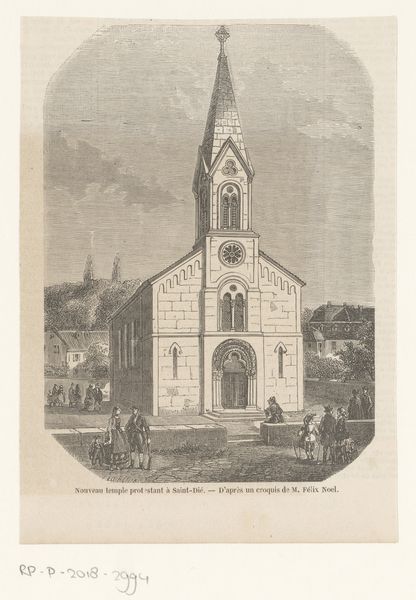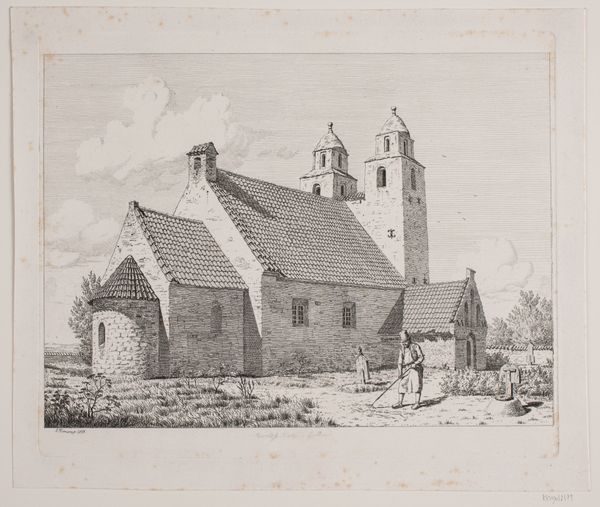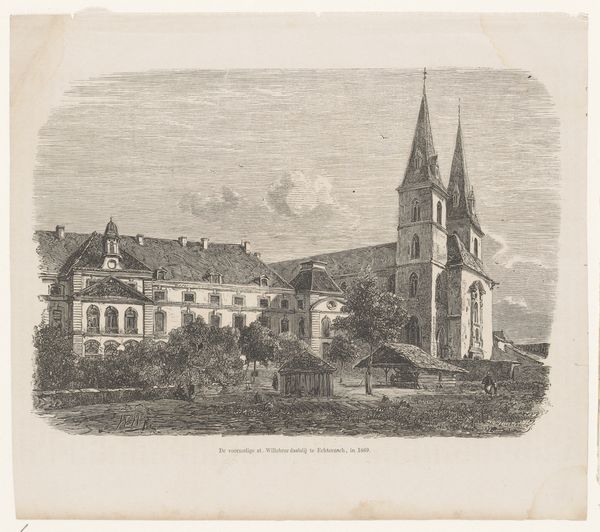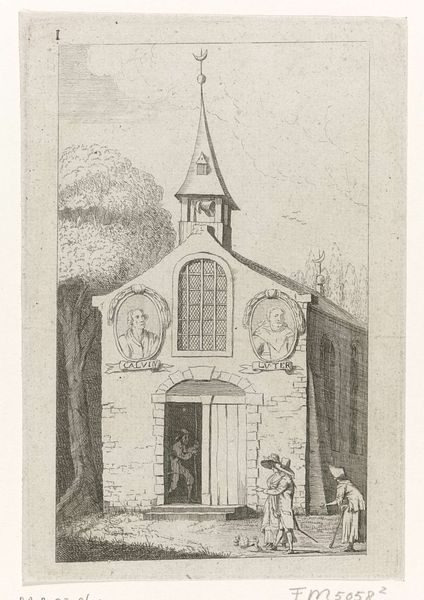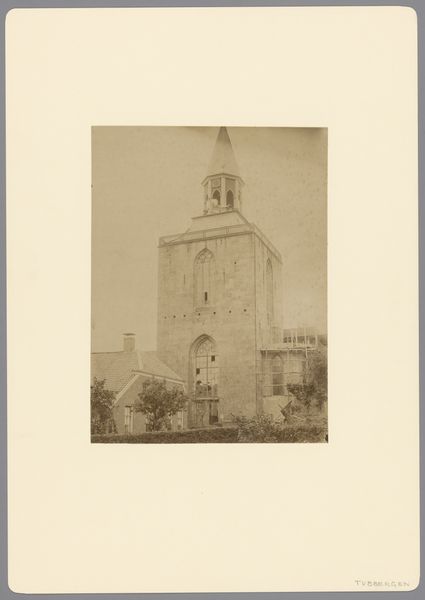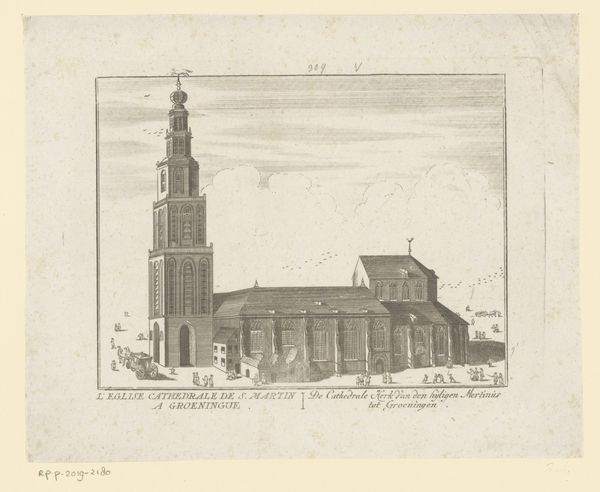
drawing, paper, watercolor, ink, indian-ink, architecture
#
drawing
#
neoclacissism
#
etching
#
paper
#
watercolor
#
ink
#
german
#
indian-ink
#
romanticism
#
cityscape
#
watercolour illustration
#
watercolor
#
architecture
Copyright: Public Domain
Curator: Let's turn our attention to "Entwurf zu einer Kirche für die Gemeinde Friedrichsdorf," a design for a church in Friedrichsdorf created around 1825 by Heinrich Hübsch. The artwork incorporates ink, watercolor, and Indian ink on paper. Editor: The color palette creates an incredible mood, a sort of hushed reverence. Note the balance: the imposing geometric facade grounded by the soft, almost hazy washes of the background. Curator: Indeed. Contextually, Friedrichsdorf was founded by Huguenot refugees, offering fertile ground for exploring themes of religious tolerance and community identity. Consider how Hübsch's design speaks to their yearning for stability and acceptance in a new land. Editor: And structurally, the use of clean lines and simplified forms aligns with the burgeoning Neoclassical movement. But the artist also subverts it, as you can tell in how the rounded arches lend an almost romantic sensibility. There's a subtle interplay there. Curator: Precisely! I see Hübsch engaging with architectural norms while subtly suggesting the community’s distinct character and its position within shifting social and cultural terrains. How might the chosen style affect community perception? Editor: Well, the overall design evokes solemnity but also hints at a spiritual ascension, like the pointed spire and elongated windows creating vertical momentum. There's visual tension, perhaps reflecting the artist’s vision for a communal spiritual experience. Curator: That leads me to consider its accessibility. Friedrichsdorf being a refuge city for those displaced from their homelands, were these design choices meant to communicate both traditional adherence and newfound independence through architectural presentation? Editor: Visually speaking, it balances grandeur with simple design. There's also how light filters through the architecture, as can be seen through the light playing along the flat facade of the church, almost adding to that hopeful feeling in such a holy space. Curator: Thank you. It’s so rewarding to reflect on this drawing, and its layered implications within the nexus of identity, refuge, and architectural philosophy. Editor: And I enjoyed digging a little deeper into form and space within the composition—something that I had failed to notice at first glance.
Comments
No comments
Be the first to comment and join the conversation on the ultimate creative platform.
